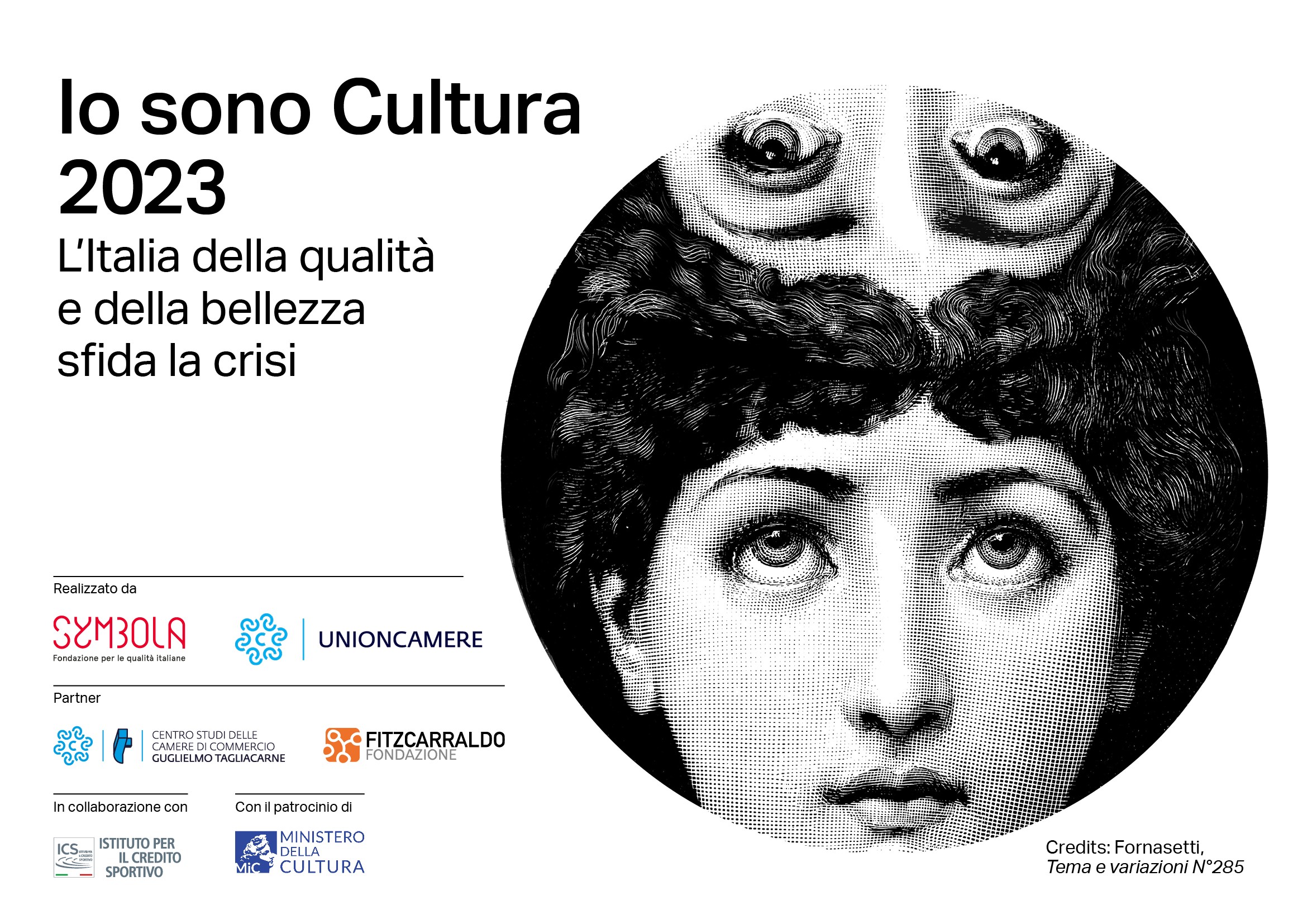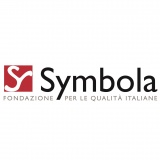
The strength of our economy and made in Italy, in all fields, owes much to culture and beauty. More than in other countries. Culture and creativity, in addition to enriching our identity and feeding the demand for Italy in the world, can today, more than ever, help us decode the present and explore radical ideas to face together, without fear, the difficult challenges we face. Starting with the climate crisis.
They can help us decouple economy and value production from energy and raw material consumption and climate-changing emissions. This is a transformation already underway in the Italian economy, which, by focusing on high value-added goods, has been able to incorporate culture, beauty and sustainability into manufactured goods and services, indulging its production chromosomes, and succeeding in intercepting the growing global demand for high-quality goods.
This is demonstrated by the many made-in-Italy supply chains, from furniture to agribusiness, from fashion to mechatronics, which are already competing thanks to a close link between manufacturing, design and sustainability, explaining part of the success of Italian exports that could exceed 660 billion in 2023.
In the cultural and creative supply chain in Italy private, public, and third-sector entities operate, that in 2022 generated a total added value of 95.5 billion euros, up +6.8% from the previous year and +4.4% from 2019. Employment also returns to growth: there are 1,490,738 workers in the entire supply chain, a change of +3.0 percent compared to 2021, compared to +1.7 percent recorded nationwide.
There are 275,318 companies operating in the supply chain (+1.8 percent in 2022 compared to the previous year) and 37,668 nonprofit organizations involved in culture and creativity (10.4 percent of the total number of organizations active in the nonprofit sector), which employ more than 21 thousand employees, temps and outsiders (2.3 percent of the total paid human resources operating in the entire nonprofit universe).
But, as anticipated, culture is also a formidable economic activator for Italy. Overall, for every euro of added value produced by cultural and creative activities, another 1.8 euros are activated in different economic sectors, such as tourism, transportation and made in Italy, worth 176.4 billion euros. Overall, culture and creativity, directly and indirectly, generate value added of about 271.9 billion euros (15.9 percent of the national economy).
Behind these numbers, many are the ongoing transformations highlighted in the report's 24 thematic focuses. The growth of the video game and software sector continues, contributing €14.6 billion of added value to the wealth of the supply chain (15.3% of the entire supply chain, +9.6% compared to 2021) and increasing jobs by more than 12 thousand (12.4% of the supply chain, +7.0% compared to 2021). The industry is also growing in terms of the turnover of video game companies (+30% compared to 2021) and exports to non-EU markets, especially North America (40% of the turnover of Italian companies).
Over the course of the year, performing arts and visual arts and historical and artistic heritage enhancement activities manage to consolidate the recovery dynamic, registering the most significant increases in terms of added value, +14.1% and +13.5%, respectively. In terms of employment, the two sectors return to growth, +4.5 percent and +3.8 percent, respectively (although the change from 2019 is still strongly negative). Architecture and design activities generating 7.8 billion euros (8.2% of the supply chain) increase the wealth produced by +2.1% in 2022 compared to the previous year, significantly more important growth for more structured and larger architecture companies.
The run of comics continues (+17.2%), a genre that has revitalized the Italian publishing scene in recent years. If the format has firmly entered the cultural consumption of strong Italian readers, the increasingly varied and articulated publishing offer has brought new audiences to bookstores-especially among the younger generations-with an important ripple effect on other genres as well. The number of Italian authors of the most famous and beloved super-heroes in the world is growing.
It is also an extremely positive moment for the demand for homegrown authors and screenwriters of films and TV series (especially the more established ones) working for large distribution platforms, through Italian productions. Italian cinema continues to experience two parallel dynamics. On the one hand, there is great dynamism in the production world: the whole Boot is an immense open-air set for national, European, Hollywood and Bollywood productions (facilitated by incentive policies). Full employment of the workforce is accompanied by growing volumes of titles and hunger for content. In addition to the rebirth of the Cinecittà studios in Rome, which have been working at full capacity for months with doubled revenues, numerous territories have grown in terms of professional preparation. On the other hand, slow is the recovery in theatrical moviegoing revenues.
Extremely positive is also the performance of a specific audiovisual sector: animation, which in the past two years has recorded an increase of 25% by number of employees, thanks to growth in the number and size of Italian studios. Effects fostered by significant public incentives that have enabled an industrial pipeline increasingly marked by co-production and localization of the most expensive phases of the pipeline.
Looking at trends across sectors, the exit from the pandemic has certainly accelerated the intermingling of culture and digital, especially with regard to the enjoyment of content through major distribution platforms (audiovisual, music, radio, video games). A side effect, but a positive one, of this interpenetration is the lowering of the average age of users and players in the cultural and creative supply chain. As far as fruition is concerned, the phenomenon is driven by the growing prominence of digital channels and applies to a great many sectors, especially those in which the digitization of cultural consumption is well established.
Prominent among these are the music sector - just think of the charts and the protagonists of major music events, dominated by the presence of very young people, right up to the most institutional kermesse ever, namely Sanremo - as well as the adjoining radio sector. In the latter, daily listening rates compared to the average figure for the Italian population (64 percent) grow significantly for Generation Z (68 percent) and even more so for millennials (73 percent).
The enjoyment of cultural consumption through digital platforms is increasingly able to intercept the very young even in the television sector. In the world of fiction, the mainstay of contemporary television, the most evident trend even in Italian productions is, in fact, that of teen-dramas. With Mare Fuori the phenomenon has shown its full potential: a series designed for generalist TV-where, in fact, it had never really taken off-was able to explode only when it changed its offer of fruition, from traditional TV to platforms (Netflix and Raiplay). In addition, thanks to the interaction of its young
viewers on social media, in interactions per single post it achieved the highest average engagement figure among all Italian TV programs, almost double the figure recorded by the runner-up (the Sanremo Festival).
The centrality of the tastes of the new generations is also asserting itself in sectors, such as communications, that cut across much of the economy, where these trends have given rise to the rebranding of historic brands. To make brands more consistent with current trends and lower the age target of consumers, many made-in-Italy brands have refreshed their image. Alongside those who have focused on channels presided over by young people such as TikTok, using ironic ambassadors known to Gen Z, there are those who have been able to position themselves on themes loved by younger audiences: from environmental sustainability to a more contemporary and fluid idea of family and gender.
All this also translates into a greater prominence of the new generations in the development of cultural and creative content, perhaps because they are able to interpret with greater flexibility the uncertainties posed by this period of transition, thanks in part to a greater sensitivity to the new issues of contemporaneity. This is confirmed, for example, by the fact that the Italian pavilion at the 18th International Architecture Exhibition at the Venice Biennale was curated by a collective of young millennial architects. Or, the growing affirmation of the generation of designers under 40, who make environmental sustainability the first design value. The world of visual arts is no different, with a 2022 marked by the market's obsession with ultra-contemporary artists, united not only by their young age but also by content strands that embrace gender identity and inequality, migration, and post-colonialism.
In addition to the advancement of digital and new generations, many sectors of the supply chain are accumulated by cross-overs with neighboring areas, such as tourism, but also cross-cutting ones, such as people's health and well-being, as well as environmental sustainability. In the first case, the return of cultural tourism to pre-pandemic levels (with Europe and Italy leading the way in its recovery) brings back to the center of the debate the priority of a synergic and coherent offer with the practices of territorial communities. Therefore, capable of making European cities attractive not only for the presence of mass icons, but for the originality and authenticity of the cultural and creative activities proposed.
Ermete Realacci President Fondazione Symbola
Andrea Prete President Unioncamere



